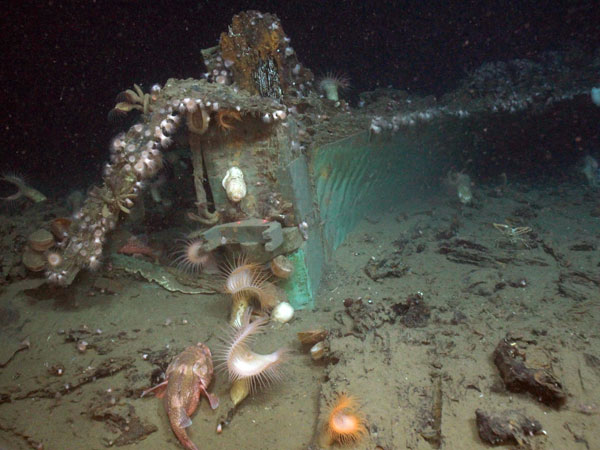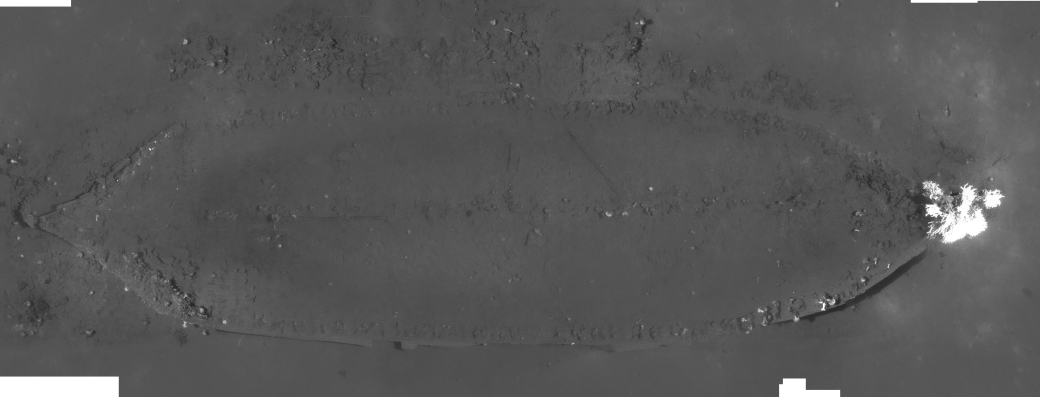
The snapped pintle on the sternpost appears to be of interest to more than just humans. Image courtesy of Sheli Smith, Lophelia II 2009: Deepwater Coral Expedition: Reefs, Rigs and Wrecks.

The Ewing Bank wreck was first discovered in 2006 during a C&C Technologies AUV survey for Remington Oil and Gas Corporation in the Ewing Bank leasing area. The wreck appeared as a ship-shaped target in the side scan sonar data. A follow-up AUV survey in 2006 by C&C Technologies for ATP Oil and Gas, Inc. collected additional side scan sonar and multibeam bathymetric images of the wreck along with subbottom profiler data. The first ROV investigation of the wreck was performed as part of the Lophelia II study, “Exploration and Research of Northern Gulf of Mexico Deepwater Natural and Artificial Hard-Bottom Habitats with Emphasis on Coral Communities: Reefs, Rigs, and Wrecks” in 2008. The wreck was identified as a wooden-hulled, copper sheathed sailing vessel with a length of 131 ft. (40 m) and beam of 33 ft. (10 m). Archaeologists collected video footage and still photos to assist with compilation of an archaeological site map. Biologists noted the extensive colony of Lophelia coral growing on the stem post and collected samples for analysis.
Further data collection efforts continued in 2009 with an AUV survey by C&C Technologies to collect additional still photos and multibeam bathymetry of the wreck and surrounding area. The resulting photomosaic allowed archaeologists to view the entire site. The 2009 field season of the Lophelia II study conducted a 12-hour ROV investigation of the wreck. Short-term and long-term microbiological experiments were placed on site to monitor local corrosion processes and microbiological activity. Additional ROV video footage and still photos were collected. Biological and core sampling, rusticle sample collection, and collection of a few diagnostic artifacts rounded out the list of tasks accomplished during this field expedition. A third AUV survey was conducted by C&C Technologies in 2012. This survey collected more than 6,700 still photos of the wreck and surrounding seafloor.
Archaeologists noted that there is a small debris field along the port side of the hull and another at the stern. Ballast stones and a number of artifacts were noted within the hull. In addition, various wooden structural elements such as cant frames, futtocks, and ceiling planking are observable. Artifacts collected in 2009 consisted of a ballast stone, a sample of copper sheathing with a fastener, a fragment of an ironstone ceramic bowl or cup, and a sample of netting that appears to be intrusive and not associated with the wreck. Based on the analysis of the hull’s construction, archaeologists believe the wreck may have been constructed in the mid-19th century but artifact analysis suggests that the ship sank in the late 19th century. Preliminary analysis indicates that the Ewing Bank wreck may have been a merchant vessel.